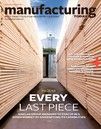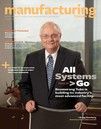Mistaking The Scorecard For The Game
 When Amazon.com, the online bookseller, went public it instantly had a market cap of $6.5 billion, yet it had never earned a single dollar of profit in its four years of business. In 1998, Microsoft paid $400 million for the e-mail company, Hotmail.com before it ever earned a single dollar of profit.
When Amazon.com, the online bookseller, went public it instantly had a market cap of $6.5 billion, yet it had never earned a single dollar of profit in its four years of business. In 1998, Microsoft paid $400 million for the e-mail company, Hotmail.com before it ever earned a single dollar of profit.
How is this possible? Their scorecards (reported quarterly profits, price/earnings ratios, return on equity, etc.) are littered with negative numbers, yet they command incredible value in the market place. Is it possibly because they radiate the greatest competitive advantage in business–innovation?
Concepts like rightsizing, Six Sigma, TQM, incremental repositioning, strategic fine-tuning, mega mergers and other similar business best practices drive slow, predictable, conservative, incremental growth. These concepts can produce a strong scorecard . . . but they won’t help you win the game. At best, they extend the time before the inevitable loss occurs.
Innovation does not drive incremental increases in the value of a company, it provides for a geometric explosion in value. It is the only way to win the game. The most difficult problem business owners and managers have with innovation is it is typically fraught with a multitude of small failures along the way. And failures are something business owners and managers have a natural tendency to attempt to avoid–at all costs. How one views failure is key to judging an individual’s ability to innovate. When asked about the process of inventing the light bulb, Thomas Edison said “I have not failed…I’ve just found 10,000 ways that won’t work.”
Encouraging, embracing, and rewarding this kind of risk taking can be a difficult psychological concept for owners and managers to accept, yet successful ones have. BMW sponsors “creative error of the month” contests. Former General Electric CEO Jack Welch often said “we reward failure,” and IBM’s Thomas Watson Sr. was quoted in a speech to senior management saying “the way to succeed is to double your error rate.”
Interesting comments, but there is an unspoken second half to the equation. The difference between a failure and an innovator is the way he/she reacts to and recovers from the failure.
One shouldn’t assume innovation is a luxury only available to large companies. On the contrary, it is effectively practiced at all levels of business hierarchy and across all industries. In fact, the most immediate results can be seen in smaller local companies and start-ups. It takes an oil tanker a mile and a half to slow down and effect a 180 degree turn, yet a speed boat can make the same turn in just yards. Similarly, a smaller company with fewer employees and less entrenched company precedents can quickly adapt to the thinking and processes necessary to set a course toward innovation.
Innovation is focused on rewriting the rules. It questions and scoffs at established dogma and time-accepted limitations on the way things must be done. No existing or potential competitor in the immediate marketplace is able to escape its far reaching influence and impact.
Some experts believe that innovators have the foresight to predict the future direction of their industry. The actuality of it is that they are not predicting the future, they are inventing it. Evidence of such industry altering innovation can be found in ‘household names.’ Dell Computer reinvented the approach to manufacturing and distributing computers. Amazon.com altered the traditional book selling process by establishing an online bookstore and capturing market data from its customers. Charles Schwab began as a discount broker and later reinvented itself a second time by becoming the world’s leading online broker. Students of innovation can learn a lot from these companies that, in relatively short order, elevated themselves from little-known start-ups to icons with household name recognition.
Companies like these are driven not by an innovation, but by a continuous process of innovation which is the right and responsibility of each individual in the company. They do not merely create new lines of business; they break through the traditional boundaries of competition to create new industries.
Success breeds contempt
The interesting paradox is that the companies best positioned to innovate are most tempted to stick with incremental change. At one point, Sears and J.C. Penney were the foremost authorities on American retailing–until Sam Walton came along. The same can be said for two well known and respected visionaries. In 1927 H. M. Warner said, “Who the hell wants to hear actors talk?” And in 1980 when EDS senior managers encouraged Ross Perot to acquire a start-up company named Microsoft, he responded, “What do 13 people in Seattle know that we don’t know?”
Evidently there are three lessons to be learned. First, regardless how brilliant, single visionaries are not enough to keep a company at the forefront of innovation in its industry over time. Second, once on top, a company must avoid the temptation to ‘rest on its laurels.’ And third, it is important to remain cognizant of how the assent to the top occurred while never losing focus on those basic tenets.
As a general rule, success typically breeds contempt for far reaching innovation.
Institutionalizing innovation
Any company has the ability to innovate because innovation does not depend on a track record of past successes or significant financial resources. It is not limited to certain types of businesses, nor is a certain kind of experienced employee required to drive its success.
However, taking an idea and turning it into cash requires the participation of almost every part of a company. Therefore, five crucial steps must be taken to ingrain innovation into a business’ daily affairs:
1. Establish metrics to measure innovation
As the saying goes, ‘if you don’t measure it, you can’t manage it.’ Metrics must be established to measure the level of innovation activity, as well as the effect and results generated by that activity.
These metrics are different than the traditional financial measurement standards and ratios commonly used to evaluate company performance, and they are intricately linked to each company’s unique innovation drivers and inhibitors. They may include measurements of key employee retention, employee morale (the hope-to-anxiety ratio), the number of creative ideas proposed and evaluated annually, and new knowledge created during a year compared to that which has become obsolete.
At best, conventional performance measures provide limited insight into the economic value remaining in a given innovation strategy by revealing the ‘strategy decay rate.’ Some signs of strategy decay are visible and obvious (e.g. declining product profit margins, slowing growth rates, decline in market share and nonseasonal declines in customer orders). These warning signs must not be ignored.
Unfortunately, when conventional performance statistics were defined, it was never anticipated they would ever be called upon to correlate the relationship between innovation and the generation of company revenue and profit. They simply weren’t designed to do that anymore than incentive plans for CEOs and Presidents are constructed to penalize for lost opportunity costs.
Also, when evaluating performance factors, it is important to differentiate between results attributable to innovation and results solely attributable to business expansion. Business expansion does not constitute innovation per se. For example, adding new sales territories/regions and/or the addition of sales representatives in existing markets would certainly be construed as business expansion, however these actions alone do not constitute innovation.
2. Instill a consistent methodology to evaluate new ideas
Every prospective innovation must be subjected to an internal due diligence. A determination must be made as to whether or not it meets the minimum threshold requirements to be eligible for consideration as a potential source of new corporate wealth.
Typical questions that must be answered as part of this due diligence process include:
- What is the application of the product/service?
- What is the profile of its target customer/client?
- Do/should we service that segment of the market?
- What potential revenues will it generate?
- How will it contribute to the company’s revenue goals?
- What will it cost to make/provide?
- What kind of profit margins will it provide?
- When should/must it be introduced to the market?
- Do we (as a company) have the core competencies to produce the product or provide the service?
- What facility resources and man-hours will be required to make/provide it?
- What, if any, additional capital costs are required to make/provide it?
- What, if any, additional staffing requirements will be required?
- Can we produce/provide it in the window of opportunity afforded us by the marketplace?
- What is the project life cycle of the product/service?
- How will it differentiate us from our competition?
- What will the marketplace’s barriers-to-entry be for our competitors?
- How long will it be before our market share is subject to serious erosion?
- What will be the company’s return on investment?
- What, if anything, will it replace that we are currently making/providing?
- What opportunities could be created by cross-selling it to existing customers/clients?
This is the systematic portion of the innovation process. It is the gauntlet through which innovative ideas must pass to determine if they can be monetized. Regardless of how novel and creative an idea might be, if it cannot be monetized to capture new wealth it must be rejected as having insufficient value to the company at that time.
3. Develop new capabilities
A continuous learning environment must be established where precedents, ideas and methodologies are continually examined and conclusions challenged.
Inevitably, company leaders must turn employees into entrepreneurs who embrace the notion that even the mundane tasks they perform and the approach they employ must be refocused with an eye to innovation.
This is a top-down process. Employees must be informed of the shift in the company’s approach to leadership. In such case, teamwork should broaden the latitude afforded them in regards to performing their job functions. The message is: creativity and other forms of entrepreneurial spirit are not just desired, they are required. They will be encouraged to develop new skills and capabilities, in addition to further honing existing skills and capabilities, thereby solidifying and expanding the scope of the company’s core competencies. This process of continuous education and expansive thinking will foster the rapid growth of innovation; and it will facilitate the process of turning creative and futuristic ideas into cold hard cash.
4. Spawn new ideas
At every step in this process two questions must be asked and answered. What have we learned? And, what new opportunities are presented as a result of that knowledge?
Innovative concepts come from observations of trends and activity within the company, within the company’s industry, and outside the industry. They may also be spurred by adding convenience and/or changes in technology, lifestyle, politics and the workplace. They may satisfy an existing need or create a new one.
Recognizing lifestyle and work ethic changes that occurred in the 1970s presented Ted Turner an opportunity to innovate. In an industry where the networks live and die by ratings, Turner focused on a world where people no longer arrived at home in time to see the 6:00 pm news, and CNN was born.
Some of the most potent innovative ideas come from considering how and where the company’s core competencies can be applied to capitalize on untapped opportunities. For example, the well known electronics retailer Circuit City believes its core competence isn’t in selling stereos and televisions, but in operating large-scale electronic superstores. It started CarMax and applied this core competence to used car sales. CarMax locations have at least 400 to as many as 800 cars available for sale at a no-haggle fixed price with financing, auto insurance and childcare available on site. CarMax rewrote the rules of used car sales (e.g. monumental inventory at each location, fixed pricing, ancillary revenue from ‘convenience sales’ of insurance and financing, we’ll watch the kids while you shop).
5. Incentivize and reward innovative action
Incentives are the aphrodisiac of change. They are catalysts that focus efforts and accelerate processes. They come in two flavors– financial rewards and personal recognition. The best results are achieved when both are utilized simultaneously.
Our psychologist friends tell us it takes 21 days of continuous repetition of a new behavior for it to become a habit, replacing a prior pattern of conduct. Incentive programs can be temporary, semi-permanent or permanent, but in all cases they should clear this 21 day window by a reasonable margin of time.
By tying incentives to innovative thinking and actions a clear message is sent to all levels of an organization:
- Senior Management is committed to the change and will monitor and evaluate employees accordingly.
- Employees who are onboard with the concept and participate will see their income and/or prestige rise amongst their peers and supervisors.
- Participants will accelerate their career path with the company by being identified as team players and supporters of established company growth goals.
One of the ancillary benefits of offering incentives is that it aids in the identification of producers, employees with the potential to produce, and ‘keepers’ (employees viewed as long-term contributors to the company that management prefers not to lose to other employers–especially competitors).
The imperative
Management must speak in unison without equivocation–innovation is an organizational imperative. It must be encouraged, acknowledged (one-on-one and publicly) and rewarded at every level within the company.
Ideally, innovation becomes an ever accelerating, closed-loop process. However, to achieve the desired result it must be pervasive, perpetual and impact everyone in the company, everywhere in the company, all the time.
Just as the internet evolved to be the tool redefining business and personal communication, existing and future companies that practice innovation religiously will redefine competition in every industry by creating new markets that have yet to be envisioned.
New technologies and continual changes in consumer preferences are the harbingers of obsolescence in yesterday’s success models and send a clear harsh message: to survive in the marketplace, business leaders must innovate or risk minimization and eventual extinction.
The upside to establishing a climate of infectious innovation is tremendous. In the words of Jim O’Neal, the former President and CEO of Frito-Lay International, “Learning to leverage the creative thinking of every individual, regardless of their level [in the organization] creates the sustainable competitive advantage every corporation is striving for.”
So, as you review the financial figures and production reports each day, week, month and year, keep these thoughts in mind . . . and don’t mistake the scorecard for the game.







